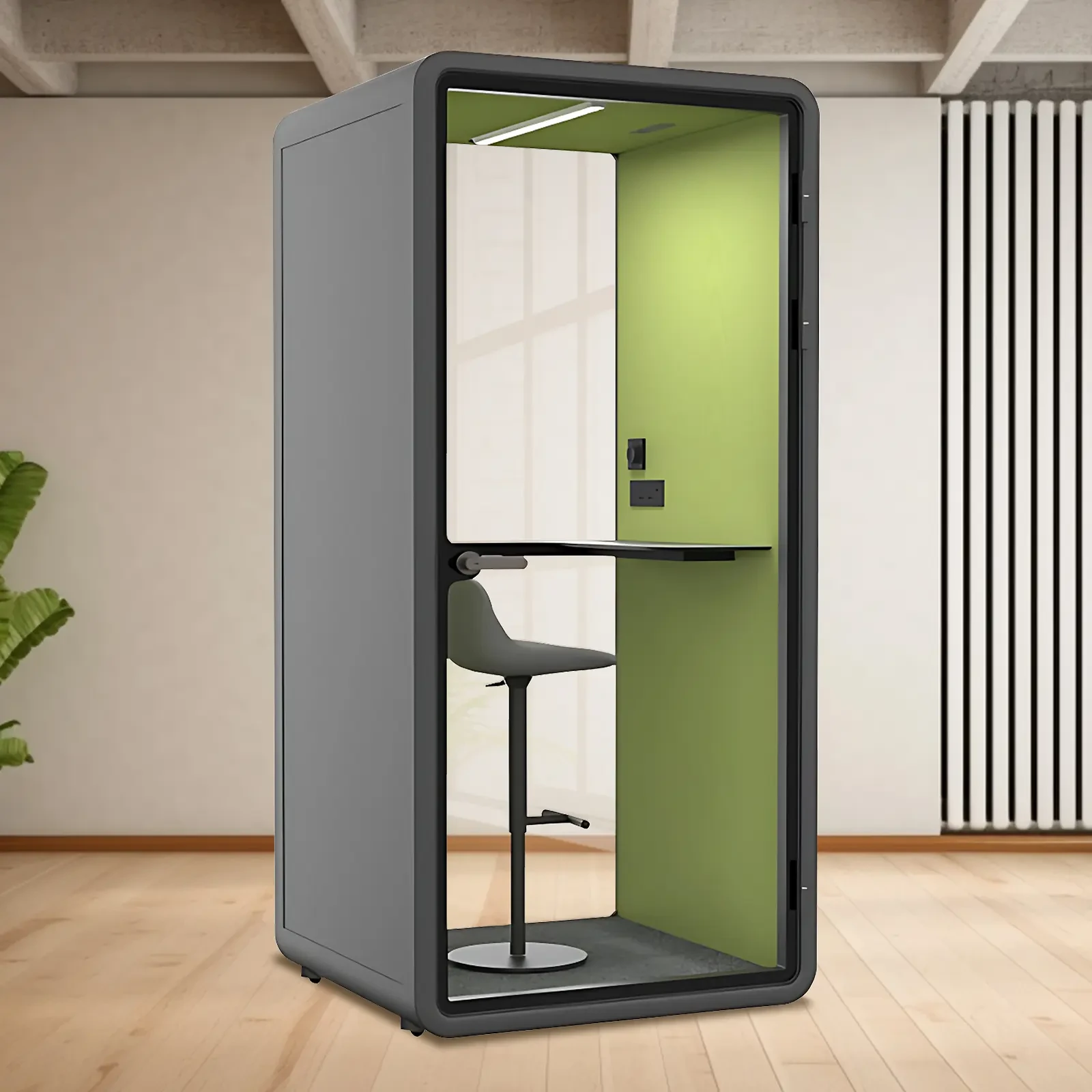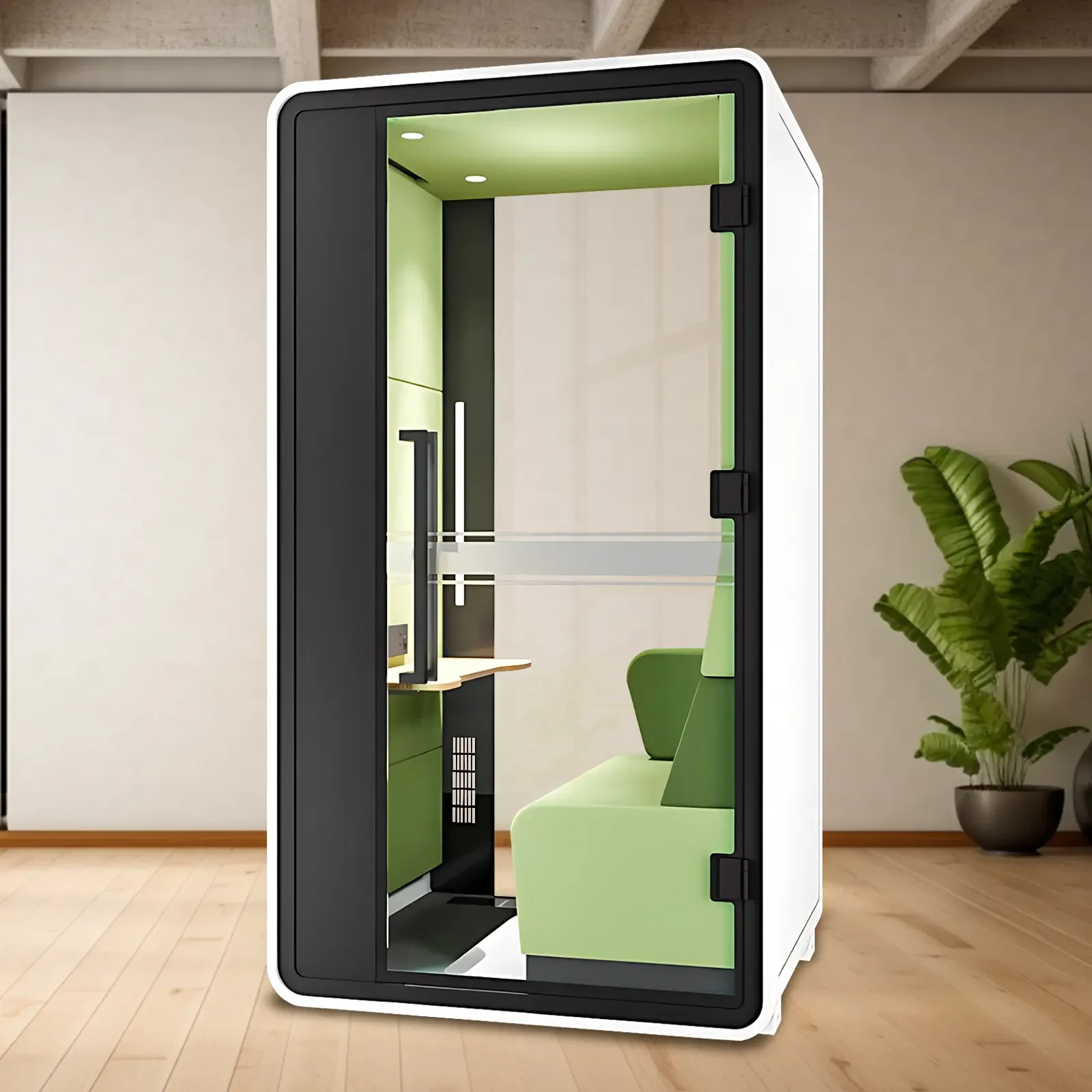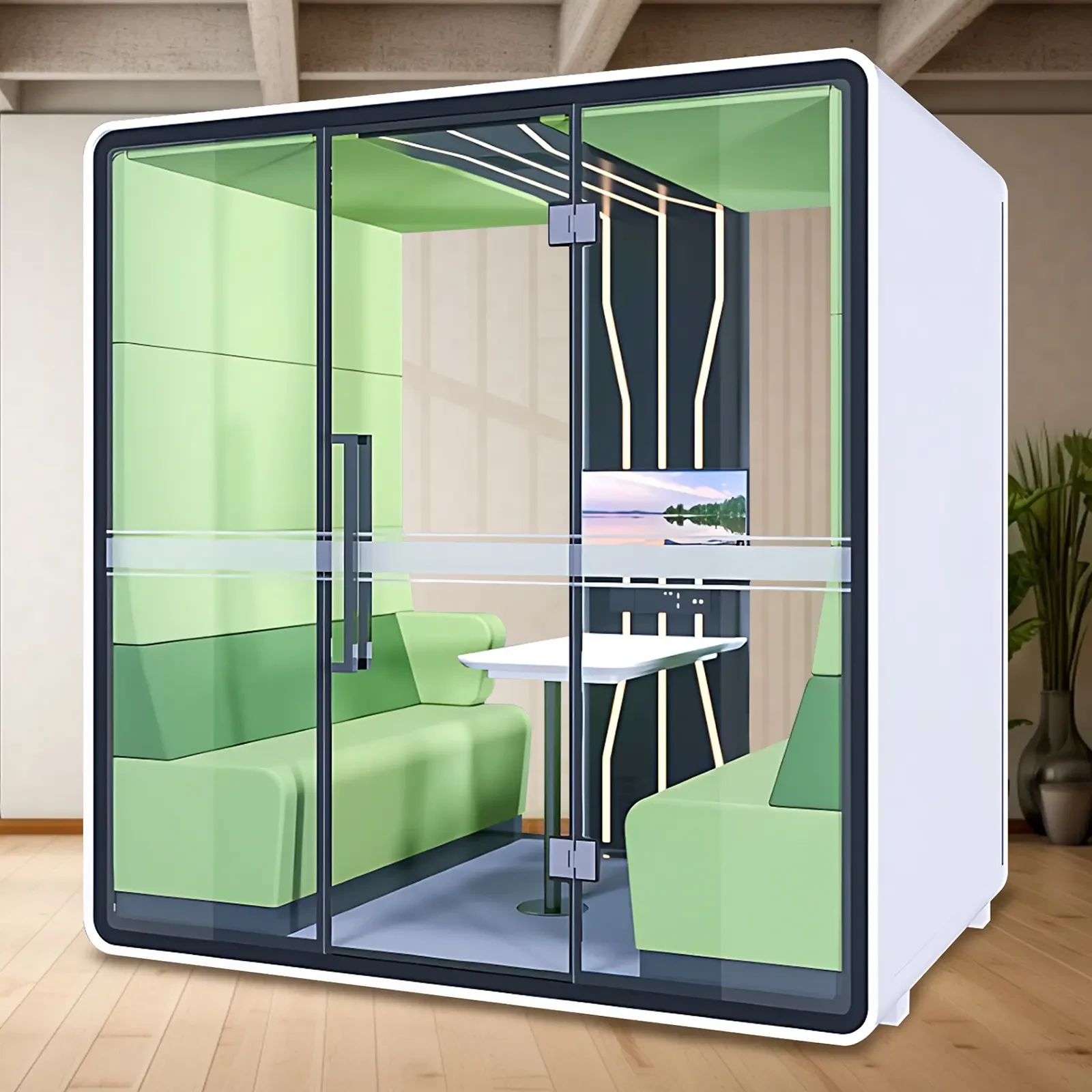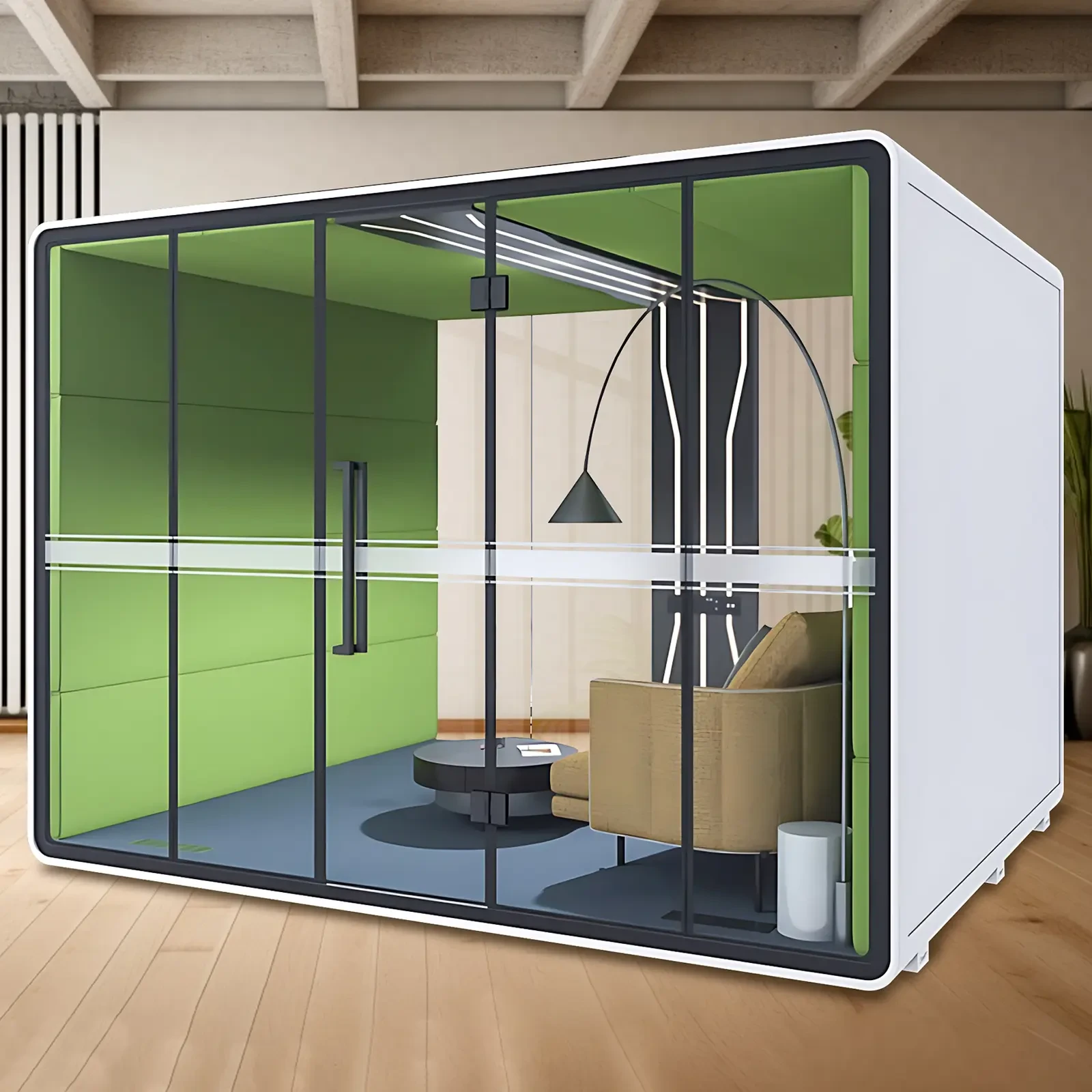Still worried about disturbing others while practicing, echoing during livestreams, or unprofessional recordings? This portable soundproof room, like a "magic hut," effortlessly blocks out noise, allowing you to "voice-controlled freedom" whether practicing piano, recording karaoke, or making private calls during livestreams. Utilizing high-density soundproofing materials and a scientific structural design, it achieves a measured noise reduction of 30-45dB, effectively shutting out the bustling city. This article explains the core specifications of a soundproof room, who it's suitable for, how to choose one, and includes practical purchasing advice, allowing you to create a private music space at home. ✨
What is a soundproof room? More than just a "small room"
Simply put, a soundproof room is an enclosed space that effectively blocks sound transmission. It's commonly found in professional settings like recording studios, broadcast studios, and instrument practice rooms. But now, it's quietly making its way into everyday homes—especially for those living in apartments, with children, or those concerned about disturbing neighbors. This isn't just any cubicle; it's an "acoustic fortress" scientifically designed: Multiple soundproofing layers (such as soundproofing foam, plasterboard, and shock-absorbing mounts) are applied to the walls, ceiling, and floor, combined with sealing strips and anti-resonance structures to form a complete sound barrier.
You may have seen it referred to as a "piano silent booth," "live broadcast booth," or "mobile recording cabin"—the names vary, but the essence is the same: it helps you completely isolate your "sound world" from the "external environment." 🔍
Core Principles and Key Indicators: Understand These 3 Key Points to Avoid Misleading
Buying a soundproof room shouldn't just focus on appearance or price; it must also consider its true capabilities. Here are three key indicators to judge a soundproof room's quality:
Noise Reduction Ratio (NR): A numerical value measuring noise isolation, measured in decibels (dB). A typical soundproof room can achieve 30-45dB, significantly reducing the sound of voices and piano music. For example, an 80dB piano performance can be reduced to around 35dB, making it virtually inaudible to neighbors. 👏 Material Structure: The mainstream design utilizes a "three-layer composite structure"—an outer layer of steel/acrylic sheet, a middle layer of soundproofing (rock wool or polyester fiber), and an inner layer of sound-absorbing panels. The thicker and higher the density, the better the soundproofing.
Sealing and Portability: Does it have a silicone seal? Are the door gaps tightly closed? Are there universal wheels for easy mobility? These are key details that influence the user experience. 💡
For example, a soundproof cabin with 6cm thick rock wool and double-layer tempered glass has been shown to achieve nearly three times the soundproofing of ordinary curtains, truly enabling the "close the door and you're in a recording studio." 🎵
Who's best suited for this? Don't miss this!
If you're any of the following, this "soundproof cabin" might be the perfect tool for your life. 👇
Piano/guitar enthusiasts: Want to practice every day but worried about disturbing those downstairs, your parents, or your roommates? A soundproof cabin equals a license for quiet practice. 🔐 Livestreamers/WeChat Pros: Experiencing excessive noise and background noise during livestreams? Install a soundproofing booth and enjoy cinema-quality sound the moment you turn on your microphone! 🎥
Karaoke enthusiasts/Vocal learners: Don't want to go out to sing, but your home is too noisy? Studio-quality echo cancellation makes practicing songs effortless! 🎤
Home users who need privacy: Make video calls without fear of being overheard, and communicate at work with greater peace of mind! 📞
⚠️ Note: If your home is extremely small (less than 2 square meters), has a poorly supported floor, or requires frequent assembly and disassembly, consider lightweight or modular designs.
Buying Guide: Choose wisely to save money
With so many products on the market, how can you avoid pitfalls? Remember these golden rules:
Test the soundproofing first: Don't just rely on the manufacturer's hype; it's best to conduct a field test or review a third-party test report (such as a CNAS certification). Focus on interior space: An adult should be at least 1.8 meters tall for standing activities. It's recommended to choose a space 1.5 x 1.5 square meters or larger to avoid feeling cramped.
Prefer detachable and portable models: These are convenient for moving or temporary use, and features with wheels and a folding structure are particularly practical.
Additional features like built-in LED lights, USB charging ports, and adjustable sound-absorbing panels enhance the user experience.
💡 Recommendations (for reasonable reference): - Entry-level: Approximately 1,500-3,000 yuan, suitable for occasional singing practice or short livestreams. Dimensions are 1.2 x 1.2 meters, with approximately 30dB of sound insulation. - Advanced: Approximately 3,000-7,000 yuan, featuring double-layer steel plates and 6cm of rock wool, with over 40dB of sound insulation, suitable for professional recording or long-term use. - High-end custom models: Over 7,000 yuan, with intelligent lighting control, active noise cancellation, and the ability to connect audio equipment, creating a true home recording studio.
Conclusion
Soundproof rooms are no longer just a device reserved for big manufacturers. Now, more and more ordinary people are realizing "sound freedom" with them—practicing without disturbing others, livestreaming without noise, and singing with quality. With the right size, materials, and construction, even if you live in an older neighborhood, you can have your own "secret music sanctuary." 🏠🎶
Don't let noise limit your passion! From today, give your ears a quiet world, and give your family a little more peace and quiet. 🌈

 USD
USD
 GBP
GBP
 EUR
EUR






